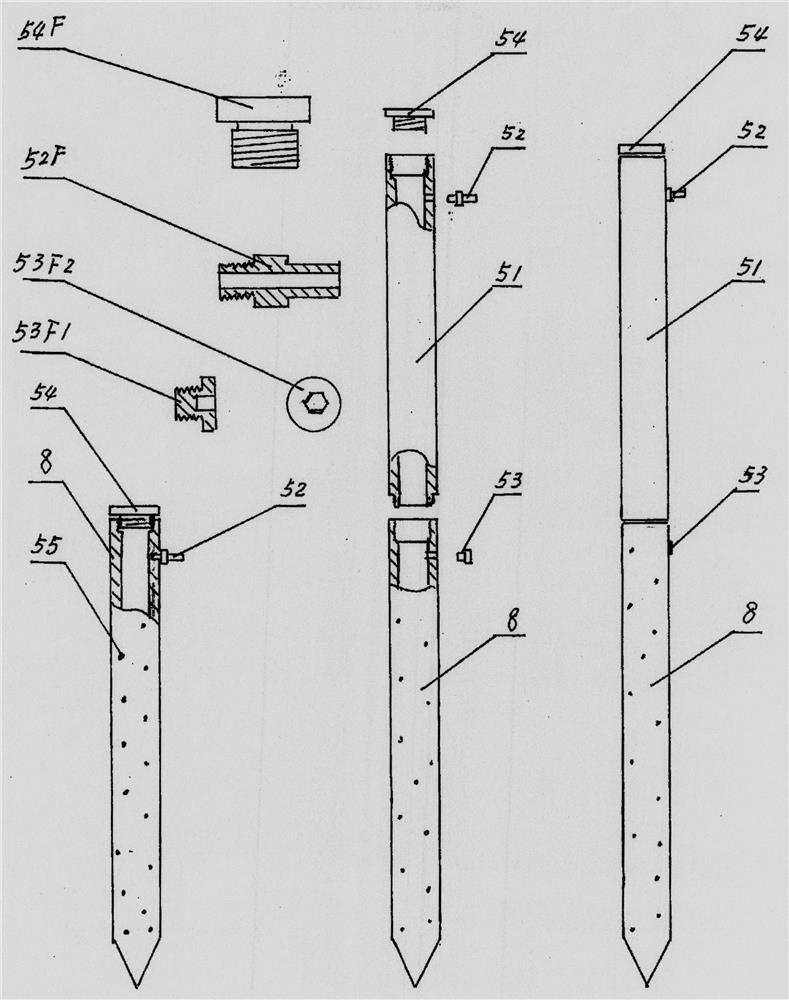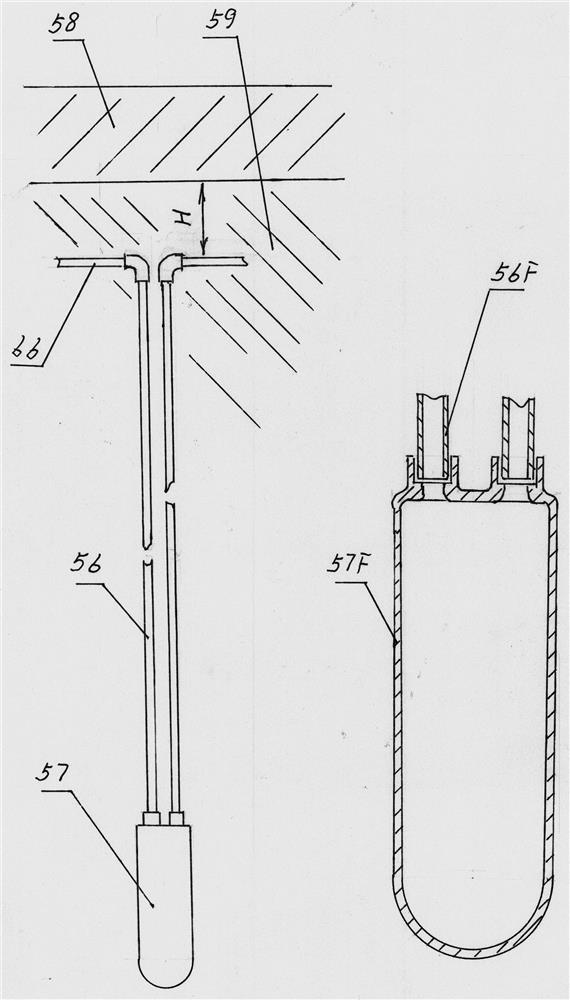Method for constructing ceramic solar hot water energy storage device by drilling holes into bedrock in alluvial soil layer
A solar water heating and energy storage device technology, applied in solar thermal energy, components of solar collectors, solar thermal power generation, etc., can solve the problems of less than 10 years of service life, high construction cost, unstable performance, etc. Minimizing depreciation and use costs, overcoming the effect of excessive costs
- Summary
- Abstract
- Description
- Claims
- Application Information
AI Technical Summary
Problems solved by technology
Method used
Image
Examples
Embodiment
[0106]1. The ceramic solar hot water cross-season energy storage device was constructed by drilling holes in the accumulated soil layer of the Loess Plateau in Shaanxi Province. The ceramic solar hot water energy storage device covers an area of 12,000 square meters and has 800 holes. The average bedrock is The depth is 90 meters, and the average hole depth is 90 meters. It provides a room temperature of more than 10°C in winter for a greenhouse of 500,000 square meters and a pig house of 30,000 square meters. Each of the 30 pig houses is 1,000 square meters. It is built on the energy storage device , The pig house adopts a ceramic solar roof with a slope anchor pile structure, the total area of the solar roof is 30,000 square meters, and the total volume of the heat preservation water tank is 1,800 cubic meters. The gripper of the high-frequency vibration hammer head of the pile driver is clamped on the side of the Φ100 mm thick-walled pointed steel pipe pile with a length...
PUM
| Property | Measurement | Unit |
|---|---|---|
| diameter | aaaaa | aaaaa |
| length | aaaaa | aaaaa |
| thickness | aaaaa | aaaaa |
Abstract
Description
Claims
Application Information
 Login to View More
Login to View More - R&D
- Intellectual Property
- Life Sciences
- Materials
- Tech Scout
- Unparalleled Data Quality
- Higher Quality Content
- 60% Fewer Hallucinations
Browse by: Latest US Patents, China's latest patents, Technical Efficacy Thesaurus, Application Domain, Technology Topic, Popular Technical Reports.
© 2025 PatSnap. All rights reserved.Legal|Privacy policy|Modern Slavery Act Transparency Statement|Sitemap|About US| Contact US: help@patsnap.com



